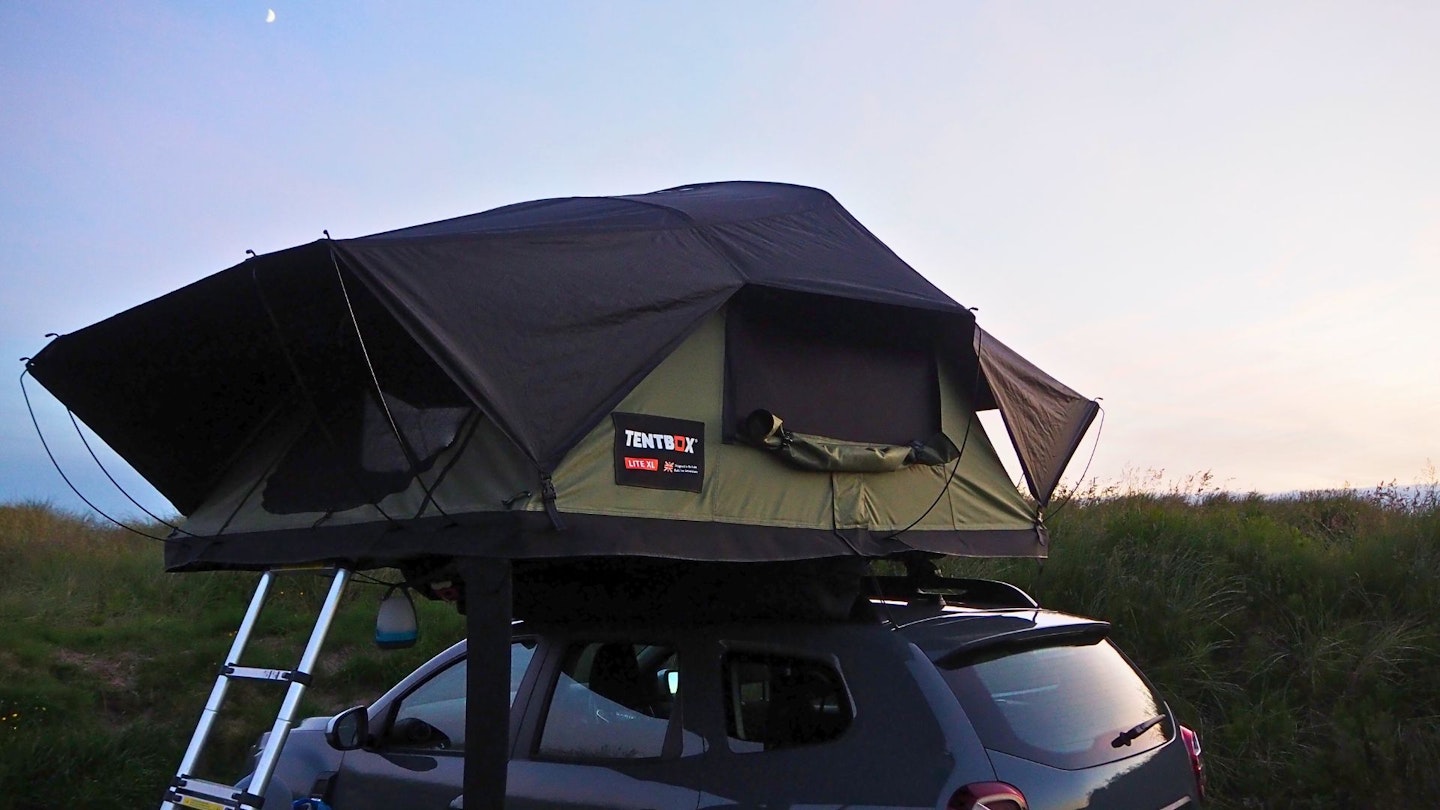You’ve seen these trending tents with increasing frequency on Instagram and the real word alike: roof tents. They’re a modern camping phenomenon offering a midpoint between a tent and a campervan – and TentBox is the most recognisable name in the game.
Starting at around £1000 these roof-mounted tents are a significant investment so if you’re thinking seriously about getting one you’d like to be sure it’s right for you. Several of our team have been using roof tents from various brands over the last few years and adore the convenience they provide compared to pitching a tent. They’re also a more affordable way of acquiring a touring vehicle without buying a campervan or doing some sort of van conversion.
This particular model is currently TentBox’s largest, offering accommodation for up to four people and creates an intriguing prospect for those who like the idea of a roof tent but aren’t necessarily one of those free-spirited Instagram people, and instead have a couple of small children for example.
To find out what the TentBox Lite XL is like, we took one up to the northwest coast of Scotland for a short summer camping trip.
Pros
- Fast to pitch and pack away
- Well ventilated
- Truly spacious enough for four people
- Durable and weatherproof
- Skylights are a great feature
Cons
- 300kg internal weight limit arguably a bit low for a 4-person tent
- Not very aerodynamic when packed away (noticeably reduces car fuel economy at motorway speeds)
| Type | Roof tent |
| Weight | 62kg |
| Packed size | 183 x 120 x 25cm |
| Doors | 2 |
| Vestibules | 0 |
| Inner | 280gsm polyester w/ DWR (3000mm HH) |
| Fly | 210D polyester w/ DWR (5000mm HH) |
| Groundsheet | N/A |
| Poles | Yes |
Design and features
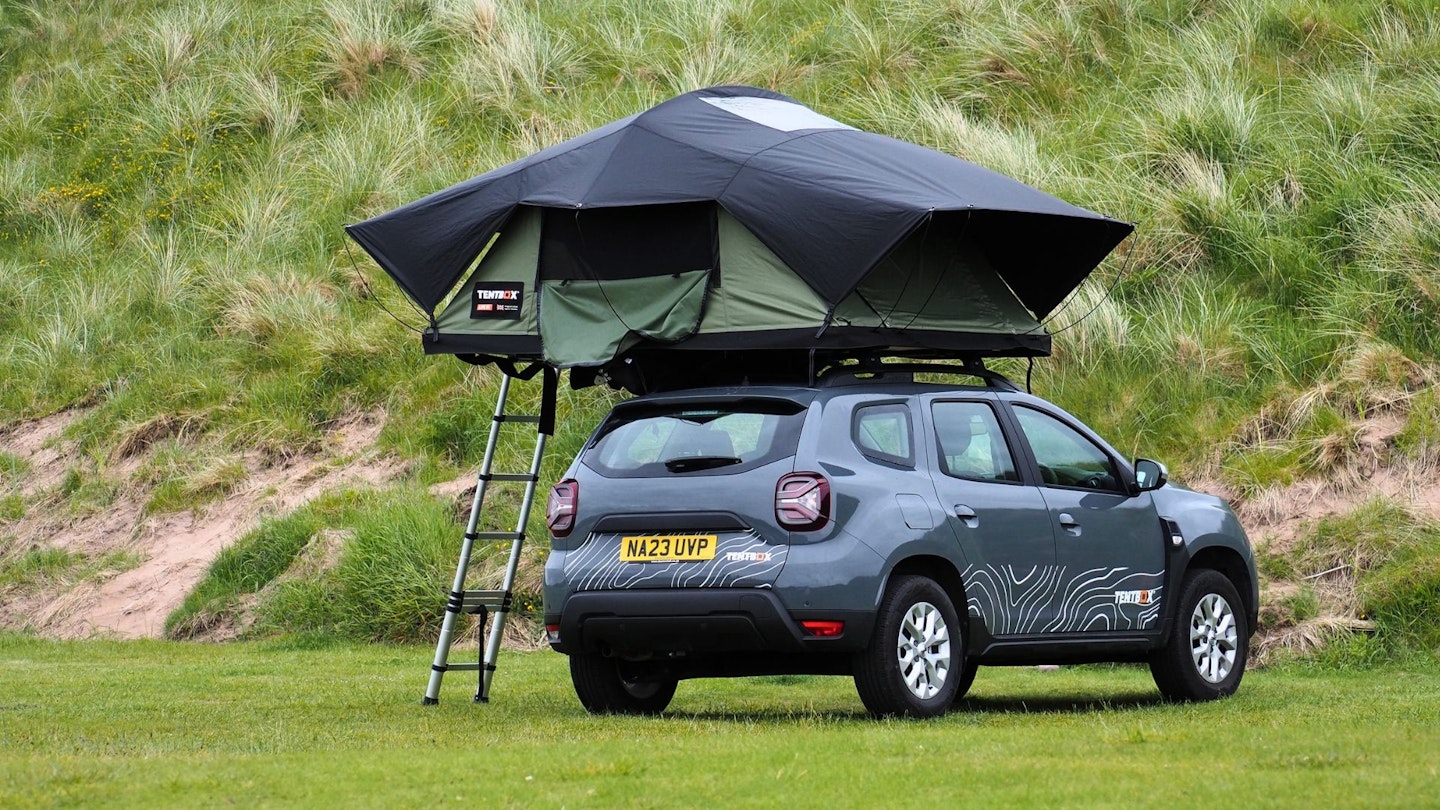
Like many roof tents, the Lite XL is a foldout design with a soft cover (as opposed to the hardshell covers of some roof tents). But in order to cater for four rather than the usual two occupants, the Lite XL measures 183cm by 120cm (which doubles to 240cm when folded out).
That 183cm width is substantially more than most two-person foldout roof tents that normally measure about 140cm across and allows the Lite XL to accommodate a super king-sized mattress. The Lite XL has a folding aluminium skeleton around which the 280gsm canvas and detachable 210D polyester flysheet sit. The base is also aluminium but reinforced with stainless steel.
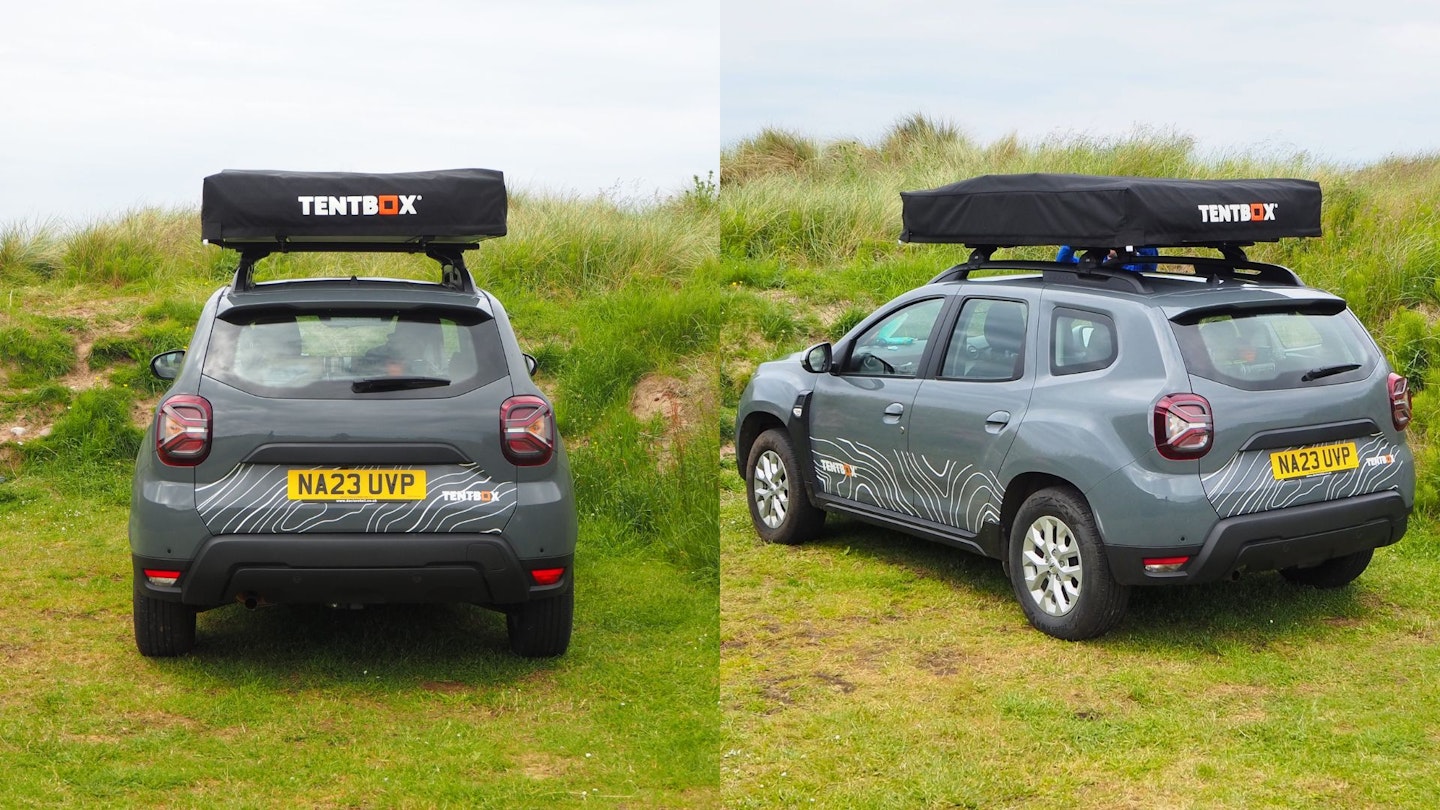
As a result, the Lite XL is reasonably bulky at 62kg and with its larger size it’s better suited to medium or larger vehicles. This isn’t so much to do with the roof load limit of the car (although it’s always necessary to check this), it’s more that the added bulk has less of an effect on a larger vehicle than a smaller one. We used a Dacia Duster, which was absolutely fine. One thing to note, however, is that the slab-sided shape of the Lite XL does have an effect on fuel economy – particularly at motorway speeds.
Pitching

As one would hope, the Lite XL is remarkably easy to pitch. You unzip the outer cover, fold out the tent (using the ladder as a lever), put the rainfly poles in place and you’re good to go. It’s much easier and faster than any ground-dwelling tent.
The one caveat is that the poles can be a tad challenging to place if you’re not very tall. On the door side it’s easy enough because you have the ladder, but for the remaining three sides it might require you to insert them in their holes before clambering up into the tent and hooking the other end through the rainfly hole. It can be done but isn’t as speedy as doing it all in one go.
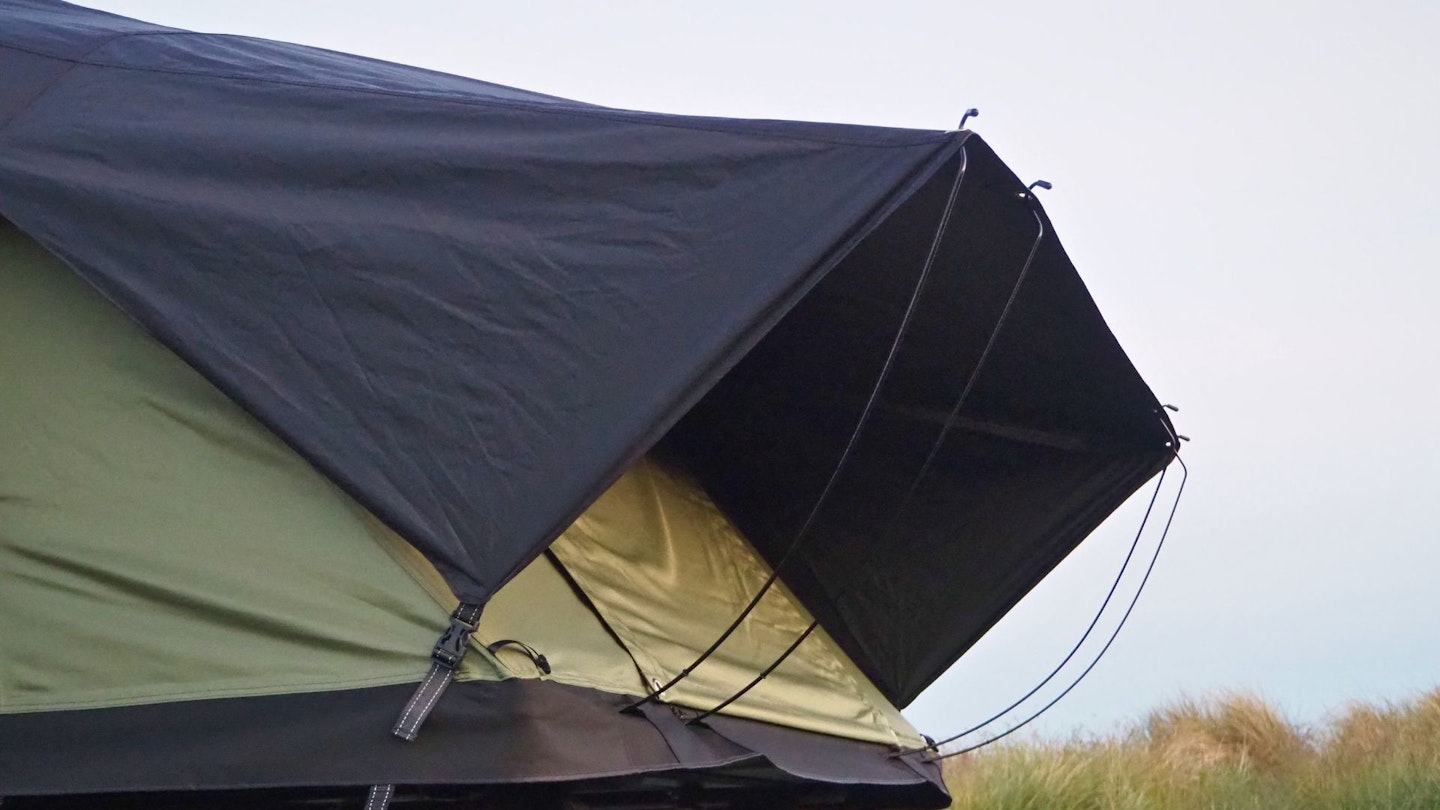
Taking the tent down is as easy as pitching it because you do everything in reverse. One of our nights away was rainy and required to pack the Lite XL away wet. We were very impressed to see that when we opened it up at the next day’s campsite the interior of the tent remained dry.
Living and comfort

The roof tents we’ve tested have provided a much better sleeping experience compared to regular tents because they feel more like a cabin or bedroom than a tent. It was the same story with the Lite XL.
Underneath you, there’s a 6cm mattress that is very welcome after a long day’s hiking, for example. The walls of the Lite XL also feel reassuringly solid, creating a cosy atmosphere. Yet, the presence of a window on every panel (including skylights on the ceiling) lets you tailer how ‘outdoors’ you want to feel.
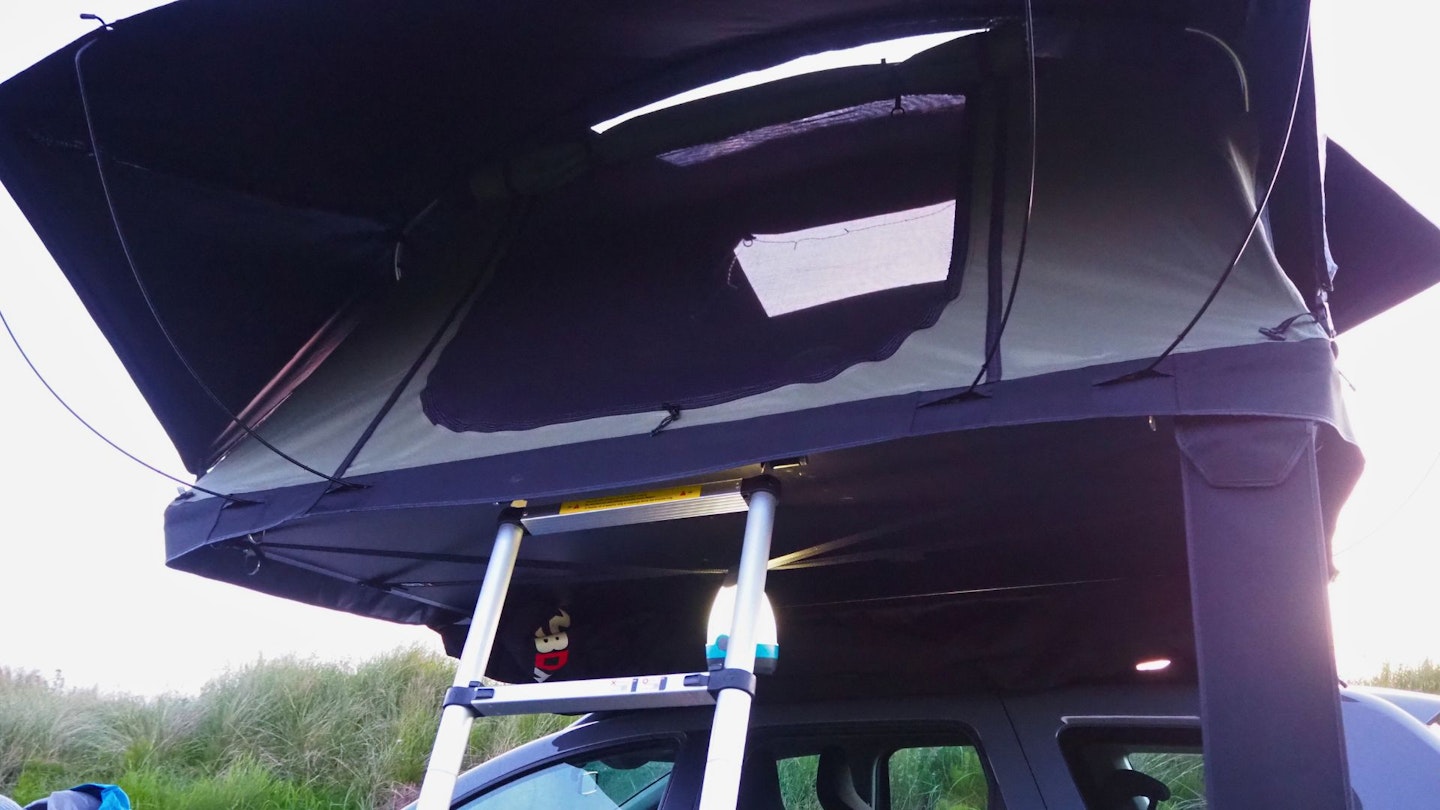
At night (in Scotland) we tended to have all the doors and windows shut and the skylights open in order to keep a draught out but still have plenty of light coming in. We found it was also enough to keep condensation at bay too.
For balmy summer nights, however, you can remove the rainfly and have just the inner – it negates the need for the poles too.
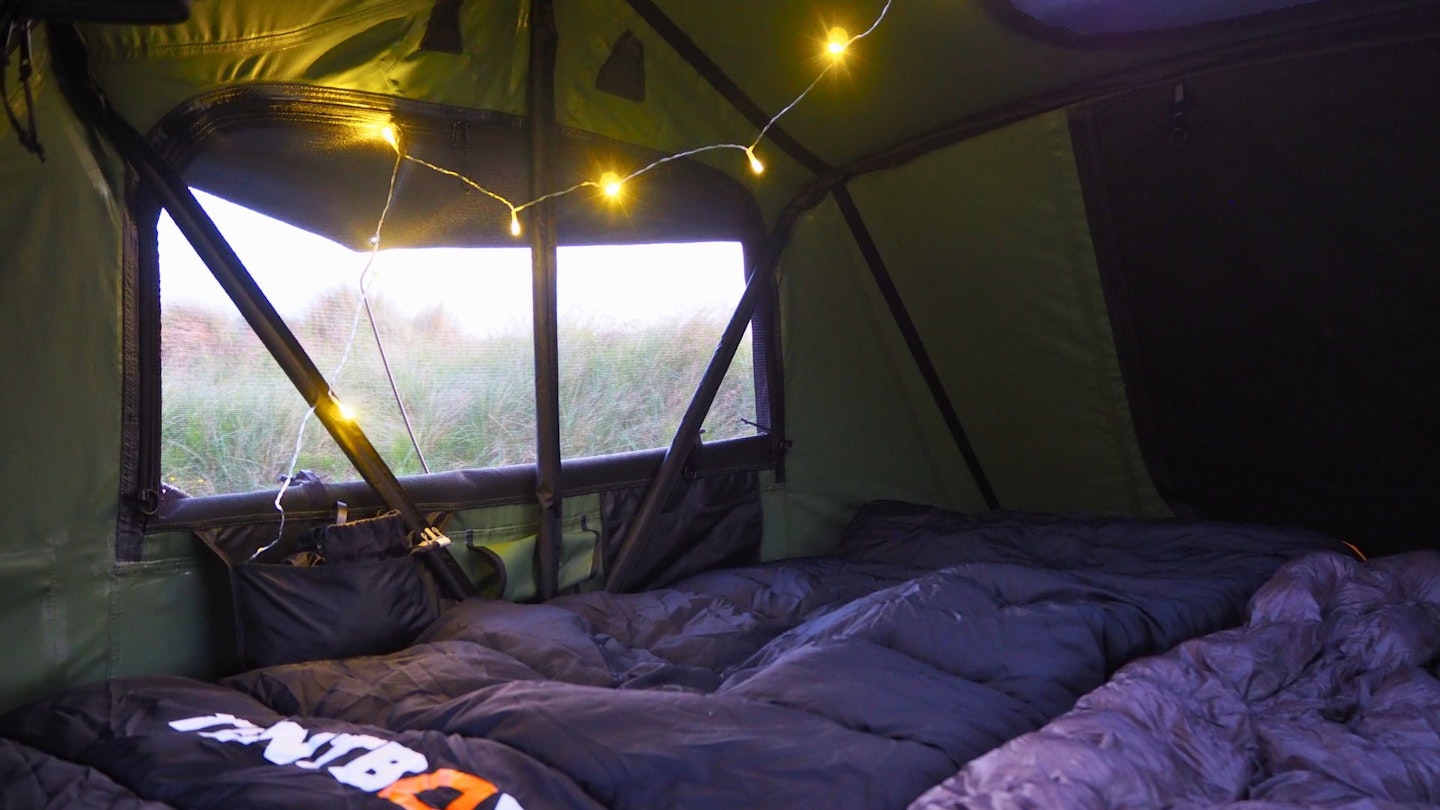
With three adults as our test dummies, there was ample sleeping space inside the Lite XL for them and we’re sure it’d be the same for two adults and two children. You can certainly fit four adults inside the Lite XL but it would be snug and also requires you to take the 300kg internal weight capacity into consideration.
There are storage pockets on each side of the Lite XL plus lantern hooks and all that jazz. You also get some very useful straps on the external base of the tent, which come in handy for damp clothes and the like.
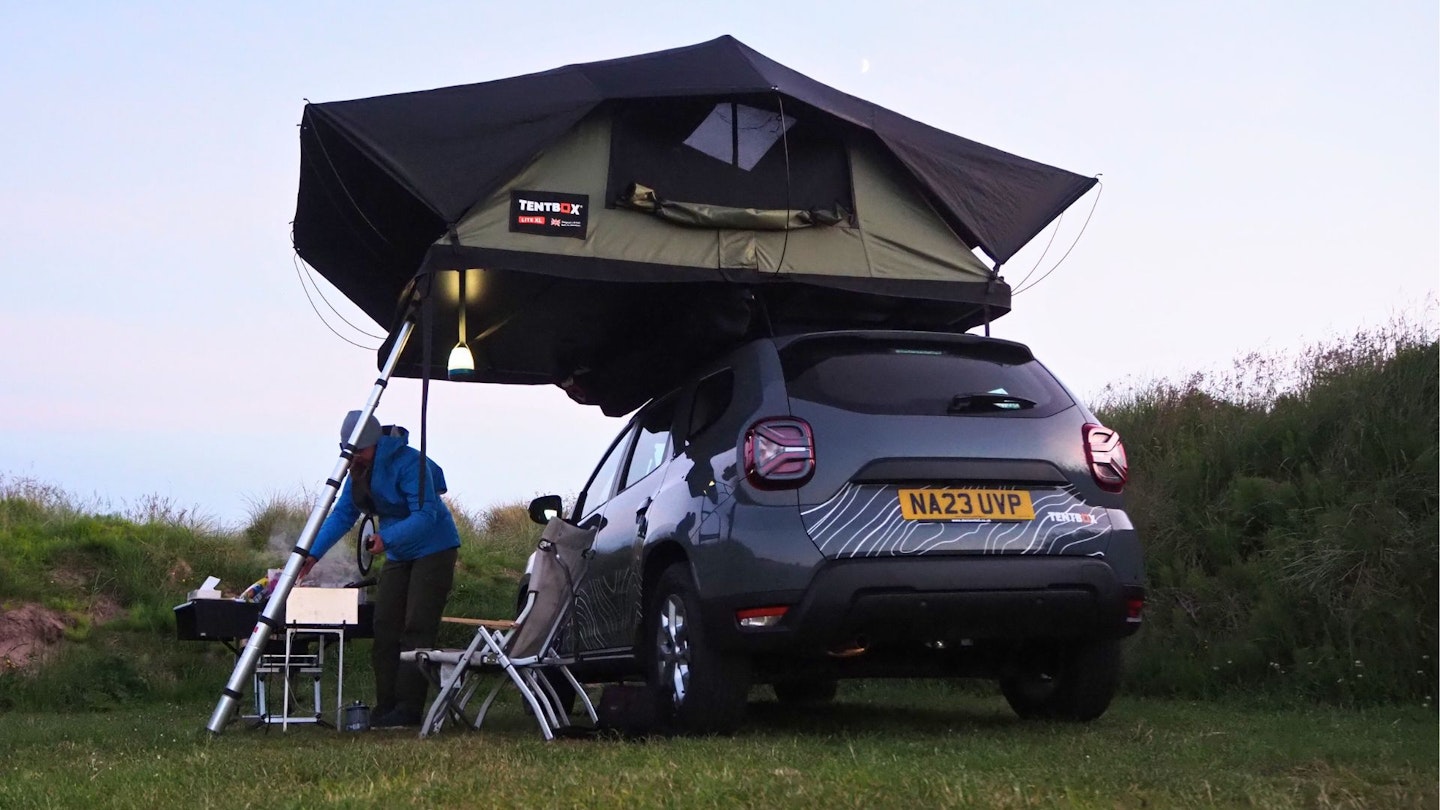
There isn’t a separate living space – this is one of the limitations of roof tents – but the Lite XL is capacious enough inside for occupants to wait out the rain with a cup of coffee if required. And the part of the tent extending out from the car does act as a shelter of sorts. TentBox also sells an awning and ‘living pod’ accessories for the Lite XL if you did want additional living space.
Durability and weather resistance

We felt more protected in the Lite XL than we have done inside most tents. This is because the materials used are more heavy duty (which is also reflected in the 62kg weight). The internal fabric is 280gsm polyester, which is much thicker than what you get on a regular tent (with the possible exception of canvas and polycotton models). Likewise with the 210D rainfly. The inner fabric and fly have waterproof ratings of 3000mm HH and 5000mm HH respectively – no rain comes in, and we can attest to that.
Some might feel a bit susceptible to a breeze if sleeping up off the ground as if in a crow’s nest. We didn’t experience any issues here and the Lite XL is rated to cope with winds up to 39mph. That said, it's always best to park up in a sheltered spot if you can.
Sustainability
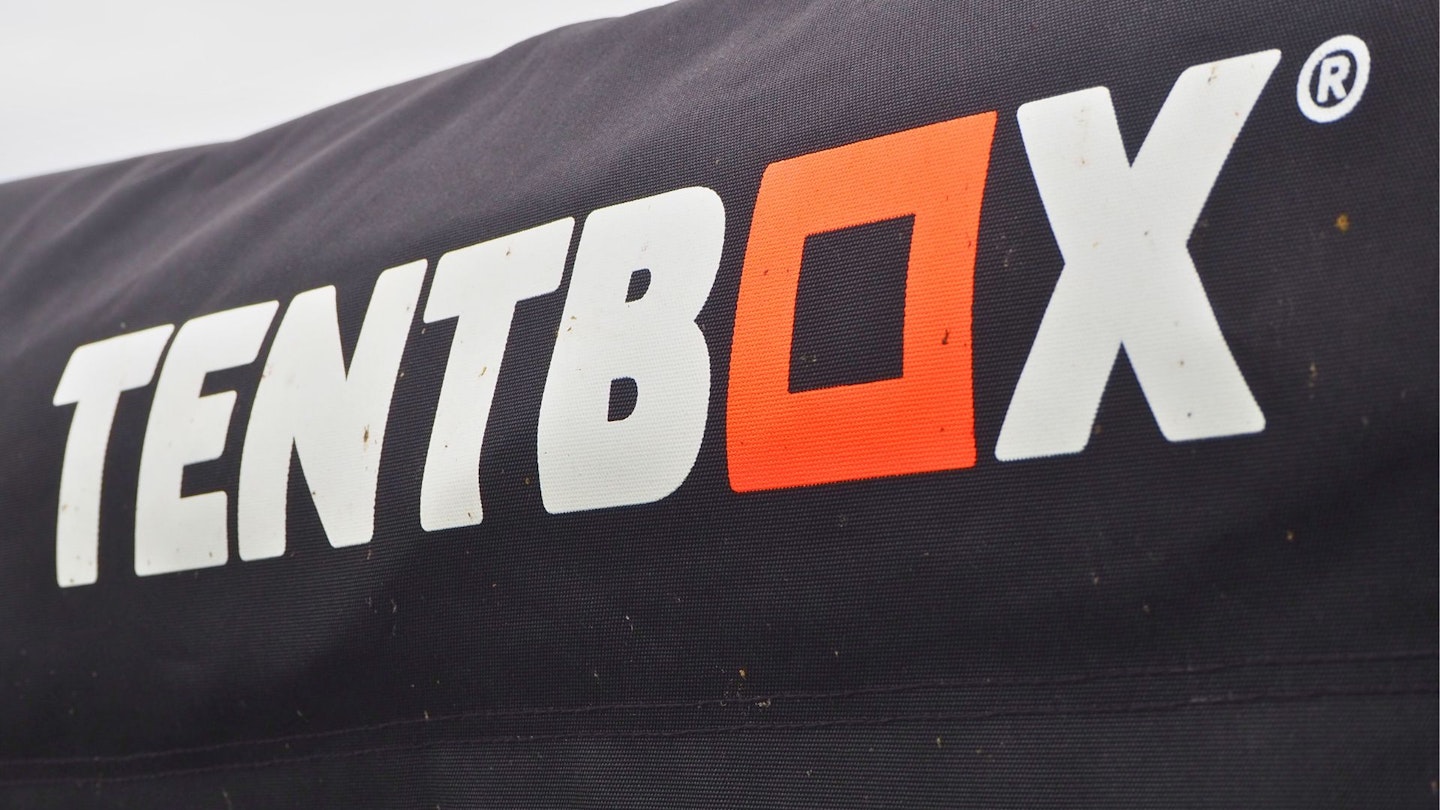
Arguably the TentBox Lite XL’s greatest strength when it comes to sustainability is its quality and durability. If cared for, this is an item you’d only need to buy once and TentBox does stock spare parts and does repairs on a case by case basis (the warranty is a generous five years).
Beyond this, it’s a tad difficult to gauge. We expect the makers of our jackets and shoes to be forthcoming about how they make their gear so we should expect the same of all outdoor gear and camping brands.
Under its sustainability FAQ, TentBox says ‘we strive to make our products as sustainable as possible, from the materials we use to the way we package and deliver tents’. We did, however, notice that TentBox still uses a PFC based treatment for the water repellent coating of its tents, and also still uses PVC – both are claimed harmful materials that many outdoor brands have ceased using and found effective alternatives to.
Price and competition
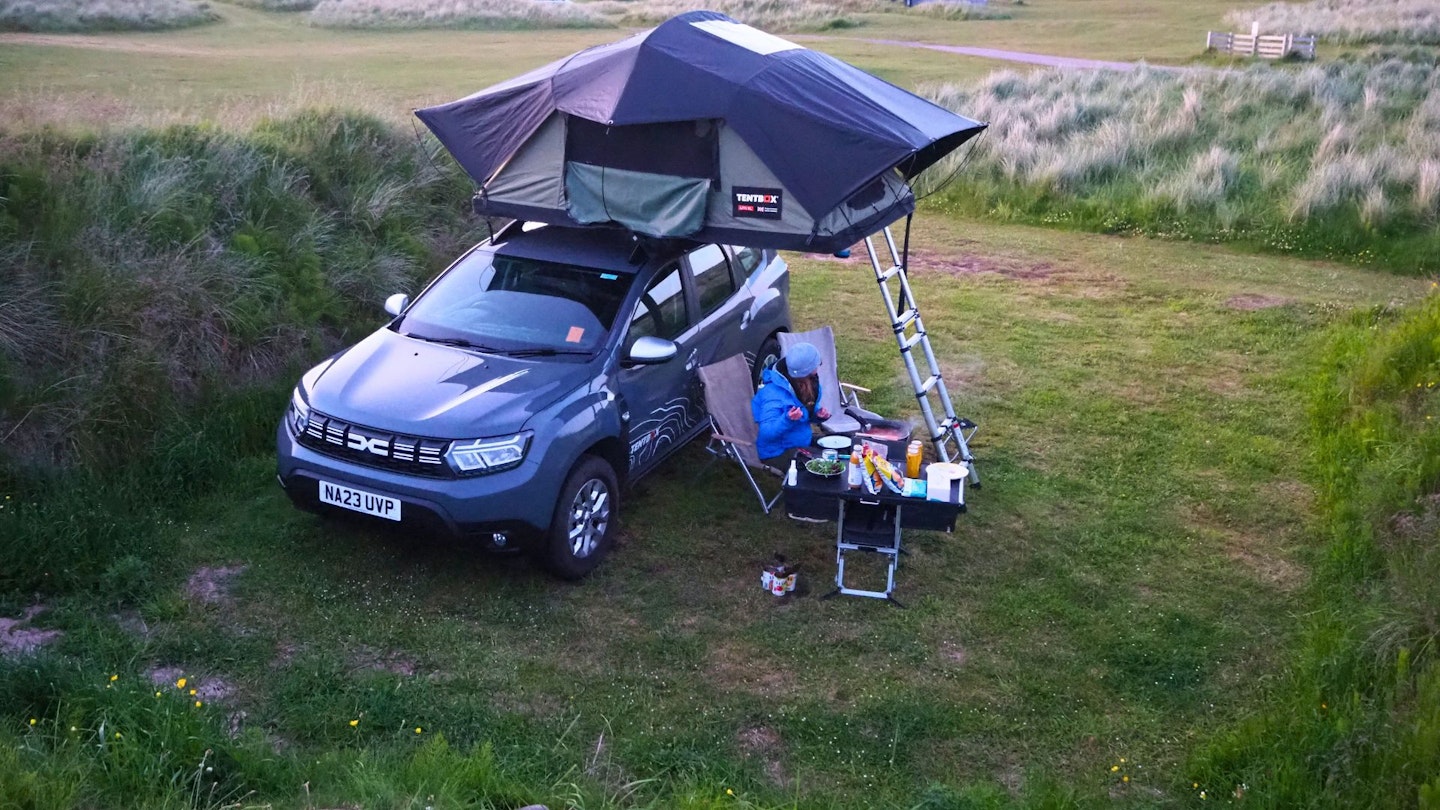
Although many might think of TentBox as the original roof tent brand in the UK, there is no shortage of competition. Other brands like Latitude Tents and RoofBunk also have foldout roof tents that cater for four.
At £1895 the Lite XL is one of the more expensive roof tents of its type but we think it remains reasonable value, particularly when compared to the price of a campervan.
Verdict

As a tent, the Lite XL is fantastic. It’s roomy, very stable and weatherproof, and very easy to pitch. For less than £2000 it’s far from cheap but it’s a very high quality item and it pays dividends in the long run.
Just be aware that the Lite XL’s square shape when folded down does increase vehicle fuel consumption (especially at motorway speeds), and it would be good to see TentBox move away from using PFCs and PVC in its products as so many other outdoor brands have.
How we tested

We tested the TentBox Lite XL over five days on a road trip to the northwest of Scotland in June. The weather was mostly fair but did involve one rainy night. On test the Lite XL was used by three adults.
The author of this review and one of the TentBox Lite XL users was our Senior Writer Chris Williams (above). Chris’ experience with camping extends back to before he could walk. Hailing from New Zealand, Chris, like most other Kiwis, spent almost as much time camping as he did in an actual house.
Chris also has several years’ experience working as a journalist, in addition to previously working for one of New Zealand’s leading outdoor gear brands.

